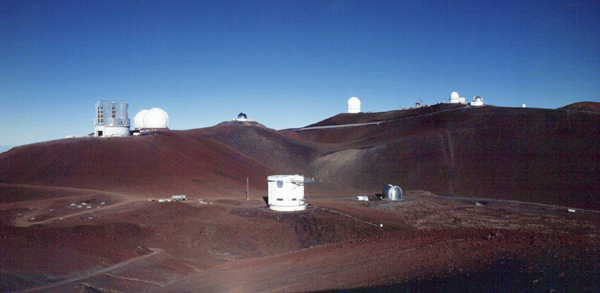
Detectors
 |
Telescopes and Detectors |
 |
| The Mauna Kea Observatory (Hawaii). Click on the buildings for information about the astronomical instruments housed there. |
Let us refer generically to instruments that gather electromagnetic radiation to study astronomical phenomena as telescopes. In this section we investigate the basic principles of telescopes. An important development in modern astronomy is the use of specialized detectors to study wavelengths of light other than the visible region. Although such "telescopes" often do not look physically like their classical optical counterparts, they have a similar function.
Many of the most interesting discoveries of recent years in astronomy have resulted from observations at non-visual wavelengths. These observations must often be made from space because the corresponding wavelengths are absorbed strongly by the atmosphere. Thus, the development of observations at non-visual wavelengths is tied intimately to the development of the technical ability to put devices in orbit above the Earth's atmosphere.
A concise reference: Nick Strobel's Lectures on Telescopes